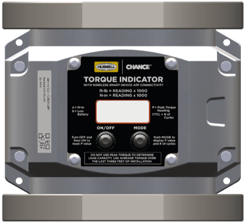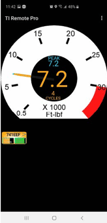
 The torque-to-capacity relationship for helical anchors and piles is an empirical method originally developed by the A. B. CHANCE Company beginning in the late 1950s. Today, the relationship is well recognized in the deep foundation industry. It is commonly referred to as torque correlation.
The torque-to-capacity relationship for helical anchors and piles is an empirical method originally developed by the A. B. CHANCE Company beginning in the late 1950s. Today, the relationship is well recognized in the deep foundation industry. It is commonly referred to as torque correlation.
As a helical anchor (tension applications) or helical pile (compression applications) penetrates deeper into increasingly dense or hard soil, torque correlation predicts an increase in installation energy or torque. Also, the higher the installation torque, the greater the axial capacity of the installed pile.
In other words, by measuring torque, engineers can better understand the capacity of helical anchors/piles in the soil. So, what is the best way to accurately measure installation torque?
Traditional Torque Measurement
The most common torque measurement methods include measuring shaft twist, or wrap in the shaft when installing Square Shaft type helical anchors, using a differential pressure transducer to measure the pressure drop across a hydraulic torque motor; or using the shear strength of torque limiters (shear pins) in order to figure out torque-to-capacity.
While shaft twist and torque limiters work well enough, their precision leaves something to be desired, and none of them offer continuous readings that allow engineers to measure torque as conditions change. Differential pressure transducers work well, but they must be carefully matched & calibrated to the installation machine and torque motor.
The Benefits of a Torque Indicator
An in-line continuous duty with Bluetooth functionality torque indicator gives engineers precise, real-time data. For those who take torque correlation seriously, this is the solution we recommend.
The CHANCE® wireless torque indicator, manufactured by Hubbell Power Systems, Inc., is a continuous reading indicator. It outdoes traditional torque measurement in several ways:
- A continuous torque indicator helps prevent any excess torsional loading with potential to damage a pile. With such a device, it's possible to pre-determine required torque values ahead of time and install helical anchors/piles accordingly. Therefore, the user already has a good idea of a specific pile's holding capacity in the soil.
- The CHANCE wireless indicator is easy to use, thanks to its simple design — a straightforward torsion bar and strain gauges. The strain gauges measure the shear strain in the torsion bar as the helical anchor is installed. The signal from the strain gauges is converted to torque in ft-lb or N-m. It fits tools with both 5 1/4- and 7 5/8-inch bolt circles and easily connects in-line between the output shaft of the torque motor and the anchor/pile drive tools. It can be transferred from one machine to another without the need to break into hydraulic lines or re-calibrate.
- The CHANCE indicator's digital display reads the torque continuously, so any changes are measured in real time and sent directly to your phone or mobile device. Those measurements can even be logged in data files and downloaded via email.
Download the CHANCE Torque Indicator App.



